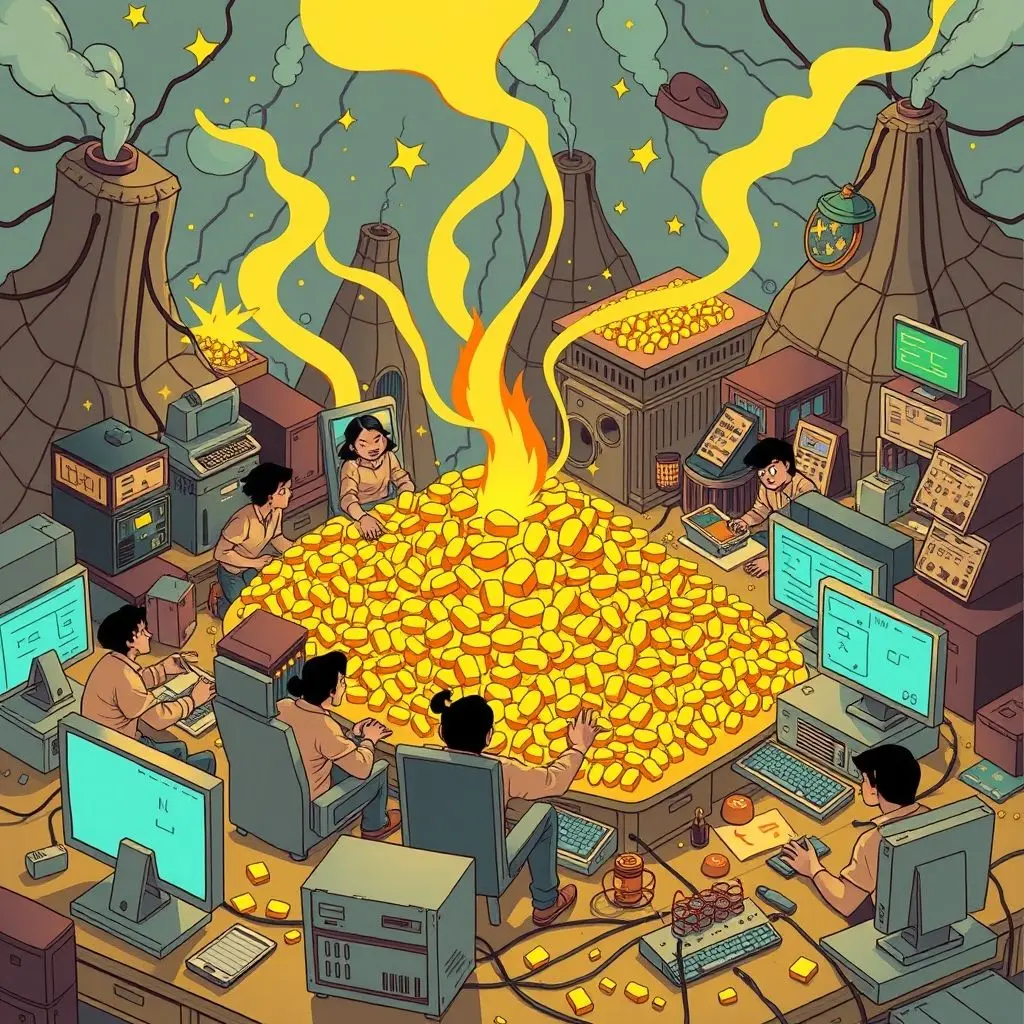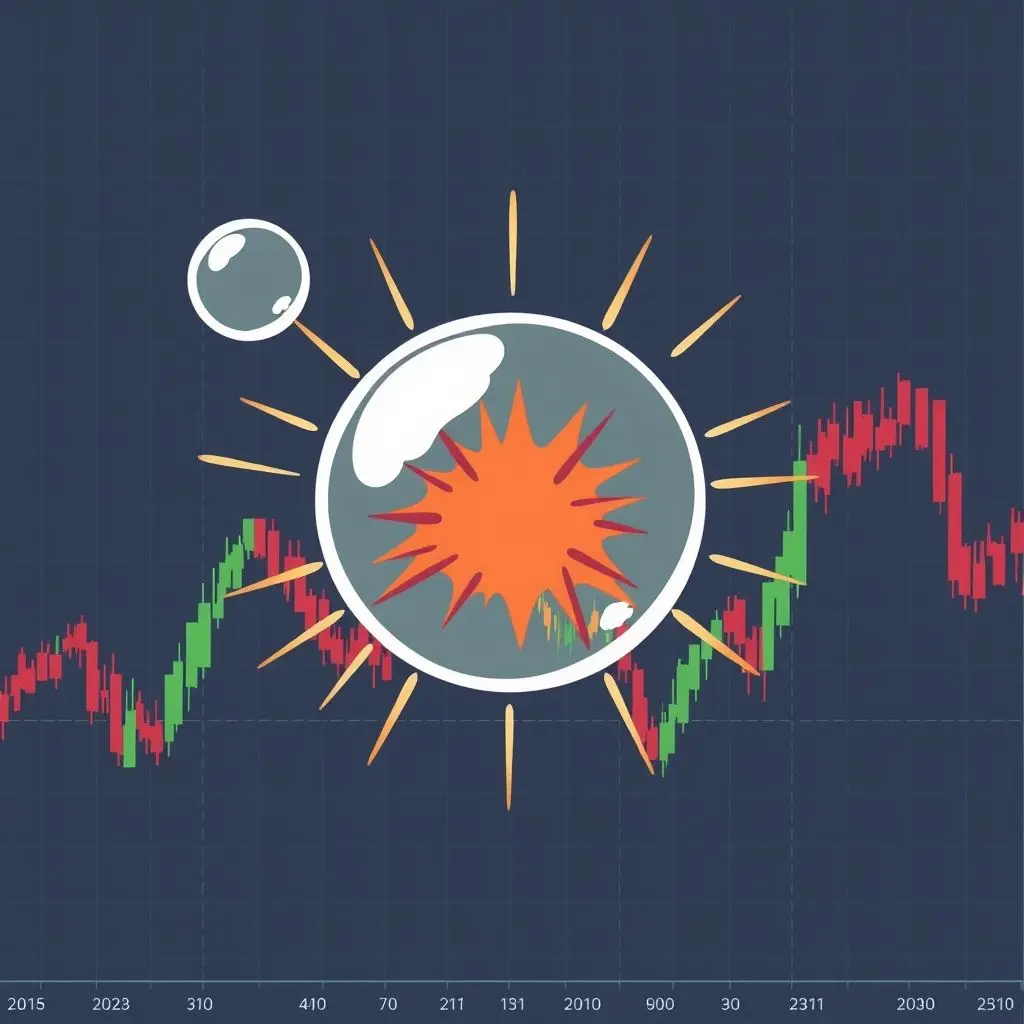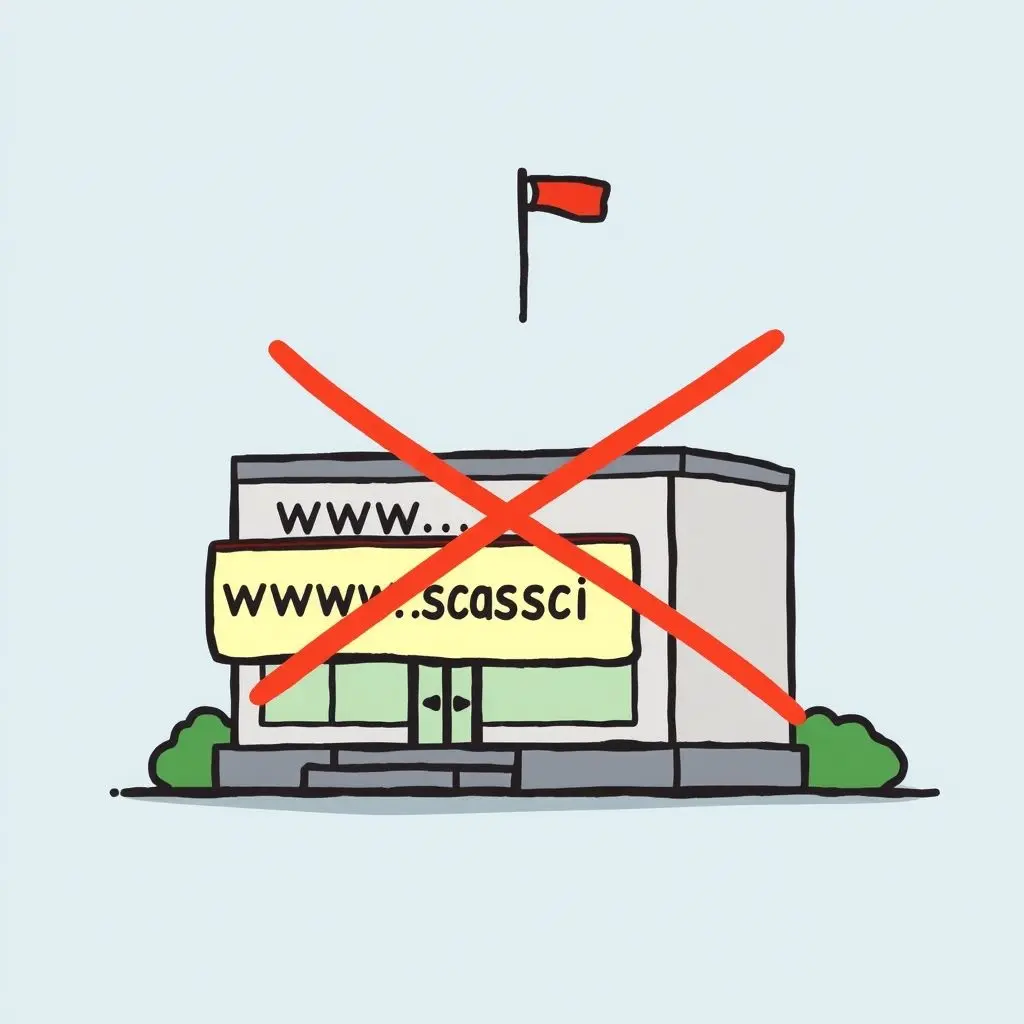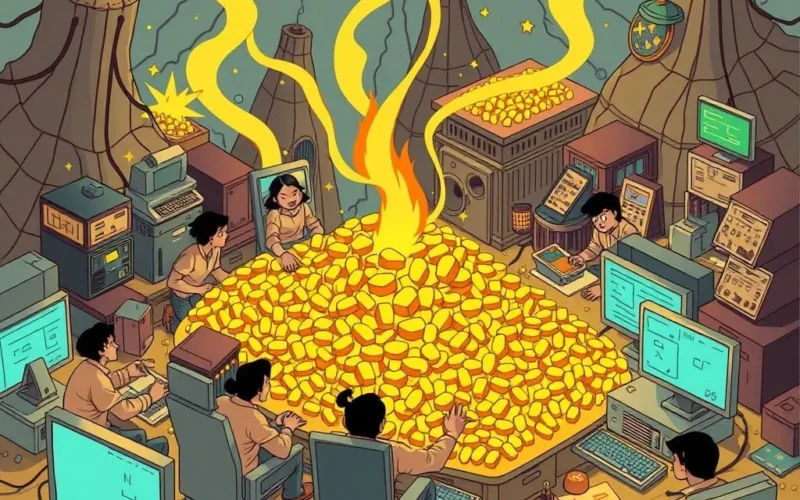Ever heard whispers of the Dot-Com Bubble? That wild, exhilarating, and ultimately sobering period in the late 1990s and early 2000s when the internet promised fortunes, and then, well, didn’t always deliver. It was a moment of unprecedented excitement, fueled by the dawn of the World Wide Web, where companies with little more than a digital idea saw their stock prices soar into the stratosphere.
Table of Contents
The Late 90s: Internet Gold Rush
Picture this: the internet was bursting onto the scene, transforming from a niche network into something accessible to the masses. It felt like uncharted territory, a digital frontier ripe for exploration and, more importantly, exploitation. Entrepreneurs and investors alike saw dollar signs in every potential online venture. Suddenly, having a website, an email address, and a ‘.com’ at the end of your name was the golden ticket.
This wasn’t just a slow adoption curve; it was an explosion. Businesses, regardless of their actual profitability or even a clear business model, rushed to establish an online presence. The sheer novelty and perceived potential of the internet created an atmosphere akin to a 19th-century gold rush, but instead of panning for gold in rivers, people were digging for digital riches online.

Sky-High Valuations and the Hype Machine
Here’s where things got truly fascinating, and perhaps a little detached from reality. Companies, often loss-making startups, with nebulous business plans, were receiving valuations that defied traditional financial metrics. Metrics like Price-to-Earnings (P/E) ratios, which measure a company’s share price relative to its per-share earnings, were either astronomical or non-existent because many companies had *zero* earnings, or even negative earnings.
Instead, investors focused on metrics like ‘eyeballs’ (how many people visited a site) or ‘page views.’ The belief was that profitability would *eventually* come, once they had captured enough market share or user attention. This wasn’t investing based on proven performance or tangible assets; it was investing based almost purely on future potential, hope, and, frankly, hype.
Money poured into these ‘dot-coms,’ driving their stock prices higher and higher. It created a feedback loop: rising stock prices attracted more investors, which drove prices up further. Valuations were driven by speculation and momentum, not by the underlying value or financial health of the companies.

A Classic Economic Bubble Forms
What we were witnessing was the formation of a classic economic bubble. In simple terms, a bubble occurs when the price of an asset (in this case, tech stocks) is pushed significantly above its intrinsic value. It’s fueled by irrational exuberance and the ‘greater fool theory’ – the belief that you can buy an overvalued asset because you’ll find someone else, a ‘greater fool,’ willing to pay even more for it later.
The value of many dot-com companies was utterly detached from their actual earnings, revenue, or sustainable business models. This disconnect between price and fundamental value is the hallmark of a bubble.
Sometimes, the simplest explanation comes in a quick visual dose. If you want a rapid-fire breakdown of this era, check out this short clip:
The Inevitable Burst: Reality Bites Hard
As with all bubbles built on unsustainable foundations, the Dot-Com Bubble couldn’t last forever. The tipping point arrived around early 2000. Several factors contributed:
- Increasing Scrutiny: Analysts and investors began to question the lack of profitability and viable business models.
- Fed Rate Hikes: The U.S. Federal Reserve began raising interest rates, making speculative investments less attractive and increasing borrowing costs for struggling companies.
- Lack of Funding: As investor confidence wavered, venture capital and public funding dried up for many cash-burning startups.
Once confidence started to erode, the selling began. And when everyone tries to sell at once, prices plummet. The tech-heavy NASDAQ Composite index peaked in March 2000 and then began a precipitous decline, losing over 75% of its value by October 2002. Hundreds, perhaps thousands, of dot-com companies that had burned through investor cash without achieving profitability simply vanished. Websites disappeared, offices closed, and dreams of instant riches evaporated overnight.

Lessons Learned (The Hard Way)
The Dot-Com bust was a harsh, expensive masterclass in market fundamentals. It brutally reminded investors and entrepreneurs that:
- Profitability Matters: A sustainable business needs revenue that exceeds costs, eventually leading to profit. ‘Eyeballs’ alone don’t pay the bills.
- Valuation Must Be Grounded: Stock prices should ideally reflect a company’s actual performance and realistic future prospects, not just hype or potential.
- Due Diligence is Crucial: Blindly following trends or relying on speculation is a risky game. Researching a company’s financials and business model is essential.
Many valuable lessons were learned by the investment community and the tech industry itself. The crash cleared the landscape of many flimsy businesses, paving the way for more robust, fundamentally sound tech companies to emerge (some of the survivors from that era went on to become today’s tech giants).

Frequently Asked Questions About the Dot-Com Bubble
What specific companies were most affected by the bust?
Hundreds of companies failed entirely, but prominent examples of companies whose stock prices were severely impacted include Pets.com (famous for its sock puppet mascot), Webvan (an online grocer), and GeoCities (a web hosting service). Even established tech companies saw significant declines, though many like Amazon and eBay survived and eventually thrived after major stock drops.
Was the entire internet idea flawed?
Absolutely not. The internet itself was, and is, a transformative technology. The flaw was not in the technology but in the *valuation* of companies rushing to capitalize on it, many of whom lacked viable long-term business plans.
How is the tech market today different from the Dot-Com era?
While valuations can still be high, today’s major tech companies often have established revenue streams, profitability, and proven business models. Investors are generally more sophisticated and scrutinize fundamentals more closely than during the peak bubble years. Regulations and access to information have also improved.
Did anything good come out of the Dot-Com Bubble?
Yes. The infrastructure built during that time (fiber optic cables, etc.) was essential for the internet’s continued growth. The lessons learned about sustainable business models shaped the development of the internet economy that followed. The shakeout eliminated weak players, making way for stronger companies.
Reflecting on the Rollercoaster
The Dot-Com Bubble remains a captivating, albeit cautionary, tale in the history of technology and finance. It underscores the power of innovation and market enthusiasm, but also the critical importance of grounding investment decisions in reality, understanding market fundamentals, and recognizing that even the most revolutionary ideas need sustainable execution to succeed long-term. It was a wild ride, and while many got burned, the period undeniably laid crucial groundwork for the digital world we inhabit today.





